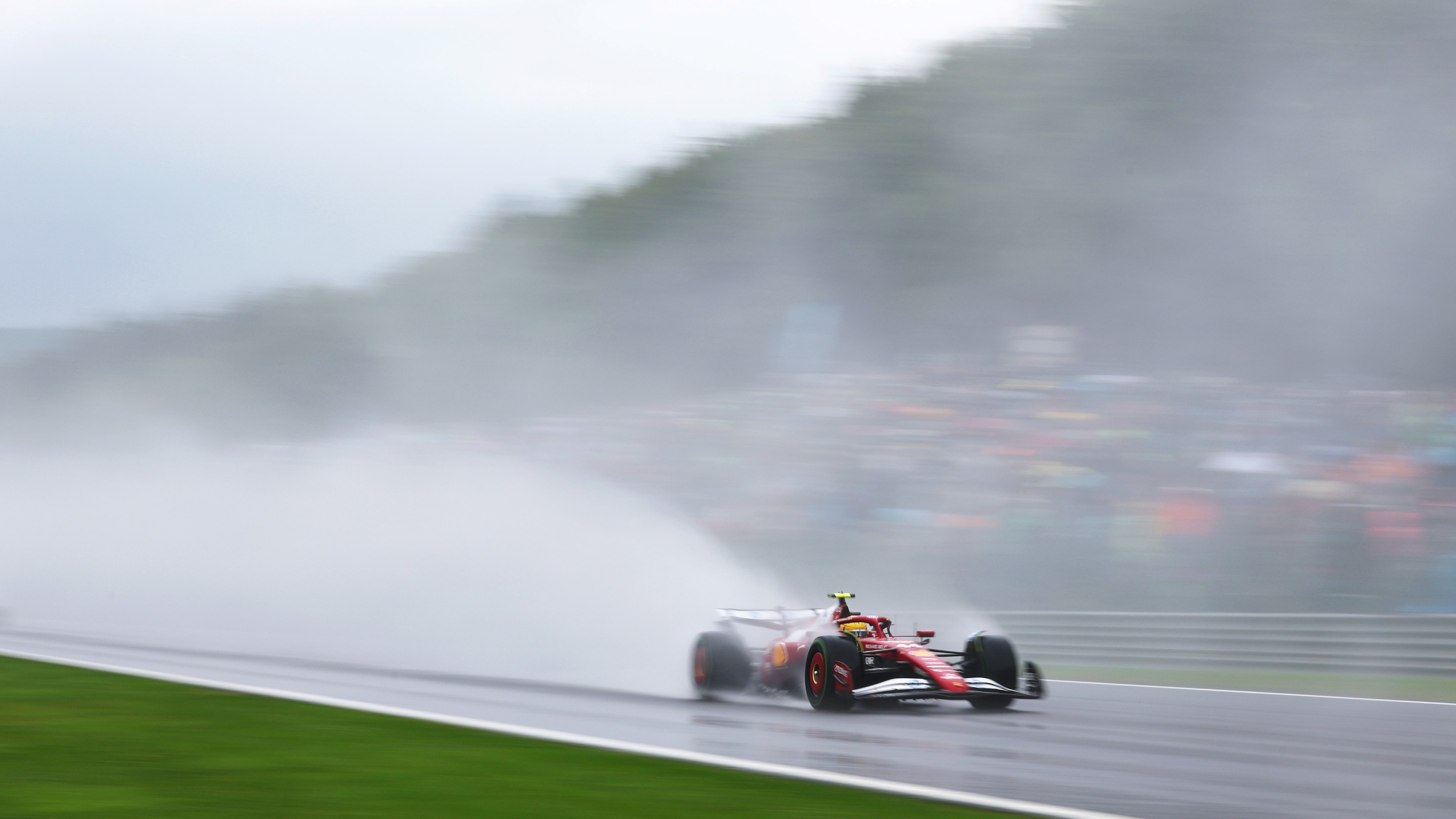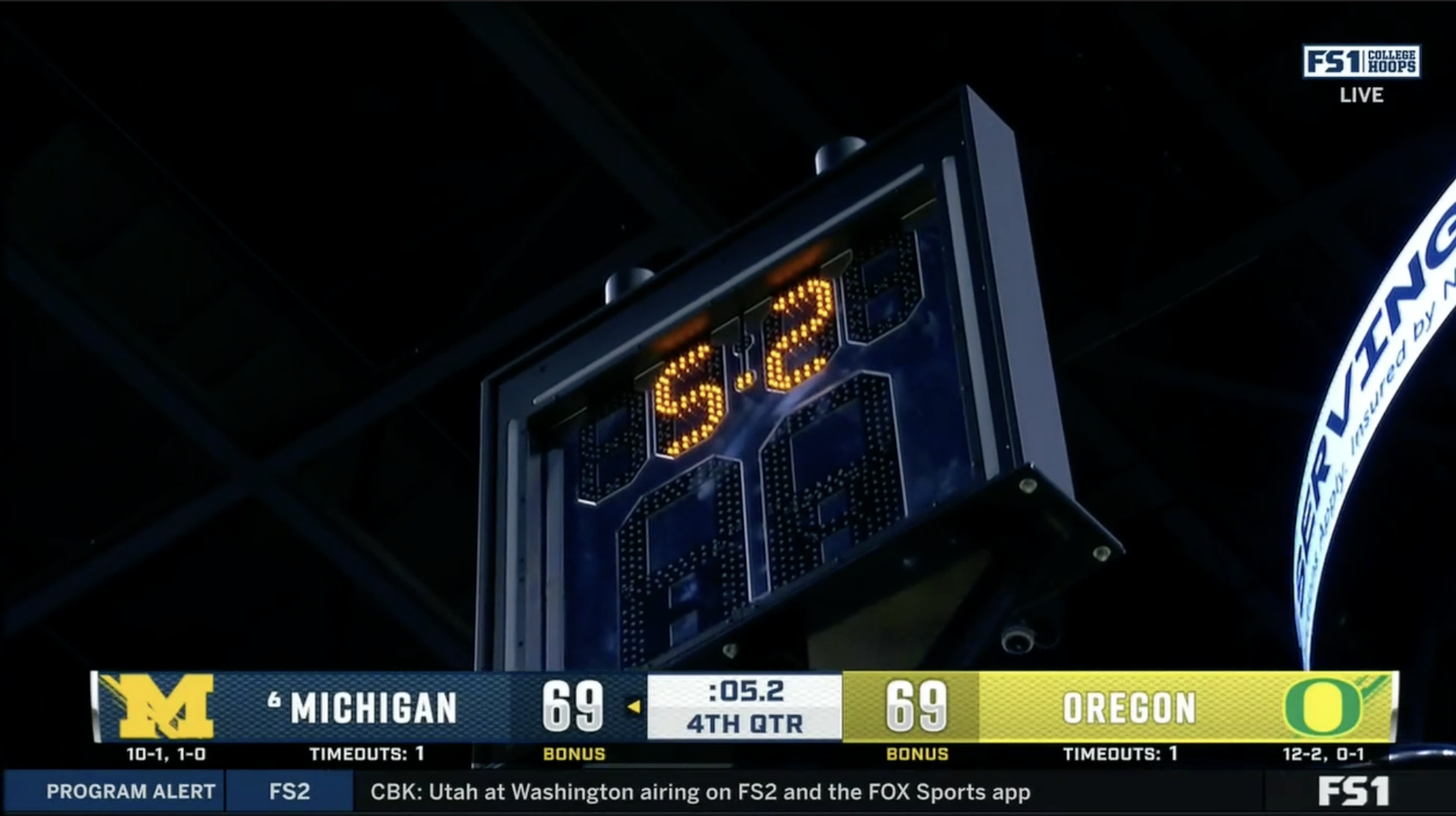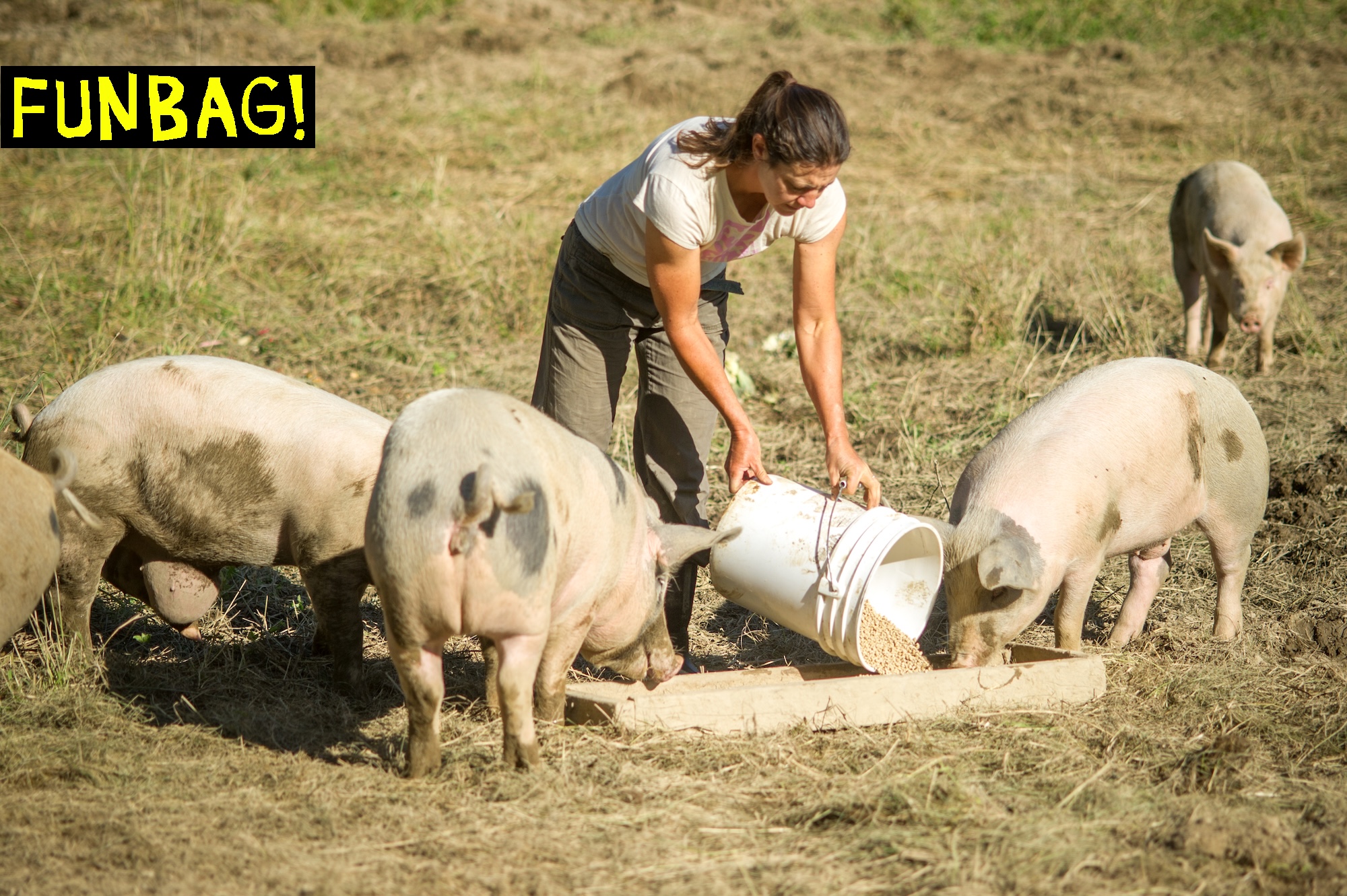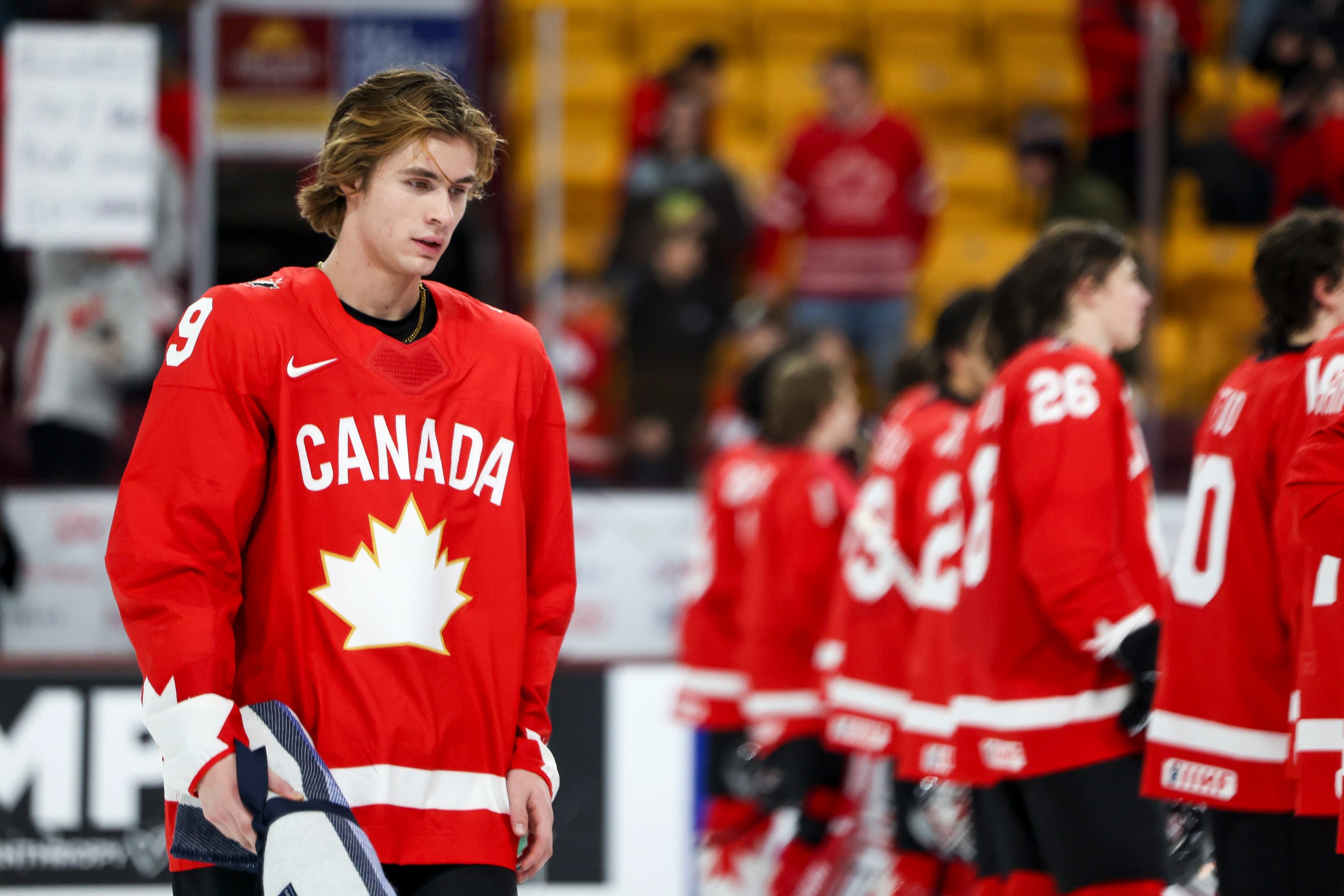Before this year's rendition of the Belgian Grand Prix, it was all feeling a little bit 2021. The Circuit de Spa-Francorchamps that year was wet and untenable. With race direction unwilling to cancel the event, the cars paraded about for two laps under the safety car before the race was red-flagged and never restarted. Officially, the race was logged as lasting one lap and under seven kilometers. The points finishers, led by Max Verstappen, George Russell (in a Williams), and Lewis Hamilton, received half of the regularly allotted points. In a sport and season with no shortage of farces, the 2021 Belgian GP still managed to stand out as noticeable clown show—yet more history for one of the most beautiful, legendary, cruel tracks on the calendar.
Four years later, and spectators were getting some unfortunate flashbacks. Rain was aggressively forecast throughout the weekend, which it is wont to do in Stavelot, Belgium. On Sunday, the Formula 3 feature race was canceled. Uh-oh. Then the Formula 2 feature race managed to run in wet conditions. Joyous days! Then race control repeatedly punted the start of the Formula 1 feature race. Uh-oh, again. Then the rain petered out, and then stopped. Out of an abundance of caution, the race started under a safety car, which led for four laps. By the time it pulled in, the track was already drying.
As it turned out, the fear of a canceled or half-run race was misplaced—what spectators should have worried about as soon as it became clear that the race would, in fact, take place was that it would quickly become boring. In recent years, the iconic track has been plagued by safety concerns around the Raidillon de l'Eau Rouge portion of the course and DRS trains. Last year was a fascinating and heartbreaking strategic race, but also served as proof of concept: In dry weather conditions, clean air is king, and even 17-lap fresher tires won't be enough unless a car is substantially faster on the main straights. The 2025 Belgian Grand Prix, resultingly, was only interesting while it was wet, which means that only the broadcast before the race start—which featured always-vocal former World Champion Nico Rosberg—and 14 out of its 44 laps were relevant for spectators' enjoyment.
But before the track dried, there was potential for an instant classic. The race was preceded by an hour of remarkable Rosberg-centric entertainment, and opened with 14 or so laps of remarkable racing (depending on how one counts). In both cases, the true protagonist of the story was Lewis Hamilton, who, up until that point, had not been having a very good weekend. His struggles with finding one-lap pace culminated in two sequential Q1 exits—one after spinning out of a chicane in sprint qualifying, and another after a track limits violation in real qualifying. He swapped out his engine and chose a pit-lane start. Still: "Anything can happen here," Hamilton said, halfheartedly attempting optimism for Sunday. "I mean, I don't know. I have no clue about tomorrow. It's going to be hard from where I am. Definitely a weekend to forget."
The weekend refused to forget Hamilton. During the rain delay, out of fear of running out of new driver facts to trot out—Charles Leclerc has never parked his car correctly; Yuki Tsunoda has a pet turtle named Kamekichi—F1's primary commentary duo in David Croft and Martin Brundle dragged Rosberg, Hamilton's former teammate, out to vamp. While Hamilton has generally remained mum on Rosberg after their very intense and very public rivalry-cum-fallout, Rosberg will surface once or twice a year like a rare astronomical event, except instead of a comet he brings a new and depraved fact about their history and/or current relationship.
Either Rosberg or the broadcast was in fine form. After running out of things to say about the weather, Rosberg responded to a question about if he missed Hamilton with, "I'm okay, I'm okay"; acknowledged that they lived in the same building and caught up from time to time; described Hamilton and himself as having a "nice, neutral relationship"; and futilely tried to move the conversation along as Croft and Brundle repeated, "nice, neutral relationship." He reminisced about terrorizing the McLaren motorhome as kids and destroying hotel rooms while wrestling as karting teammates; showed a photo of him and Hamilton riding an ATV when they were 13, or when "we were best friends at the time"; and recounted a story of Hamilton (who was "proper nuts, like he was nuts") riding a jet ski, flying after going into a giant wave full-speed ("I'd never seen someone go so high"), and crashing down and cracking his chin open on the jet ski.
And yet, somehow, Hamilton managed to upstage Rosberg in entertainment value during the race. After his pit-lane start, Hamilton was running P18. Since everyone was interested in throwing it back to 2016, Hamilton decided to pull off a classic wet-weather performance. He passed five cars in the span of two laps on parts of the circuit that would be impassable in any other conditions and clawed his way to P13. On lap 12, Hamilton was the first car to pit for slick tires, practically gaining six places from the pit stop alone. He suddenly found himself, on lap 17, in P7, where he would finish the race—an 11-place fight back to the points. Perhaps the weekend would be worth remembering, in the end.
Rarity of all rarities, Ferrari nailed the tire strategy, and, unlike at the British Grand Prix, both drivers made it out well. Leclerc kept Verstappen at bay for the opening laps of the race, despite his intermediate tires falling off a cliff. He pit the same lap as Verstappen, received a quick pit stop and narrowly dodged an unsafe release penalty, then fought Verstappen off for the remaining laps of the race.
And thus the rapturous account of the weekend ends. After the initial round of transitional pit stops ended, there was distressingly little intrigue. The championship battle featured immediately after the safety car restart—Oscar Piastri passed Lando Norris, then received the preferential strategy as he was leading the race, and then it was management mode.
Degradation was low enough, and track position important enough, that none of the cars in the points needed to or wanted to pit. Norris made some costly mistakes in his pursuit of Piastri during the closing laps of the race, but in dry conditions, overtaking at Spa is simply too difficult; even if he closed the gap with his sturdier compound of tires, passing would be an entirely different question. Differing downforce setups due to the threat of rain exacerbated the problem. Just ask Verstappen, who spent the entire race staring at the rear of Leclerc's Ferrari, or Hamilton, who managed on multiple occasions to pull close to Alexander Albon's Williams, but never had the pace to pass. From lap 20 and on, the race became a dry procession without even pit-stop intrigue.
"[We could have started the race] miles earlier, one hour earlier," Verstappen said in a post-race interview. "It was just a bit of a shame ... it just ruins a nice, classic wet race."
Here is the dilemma at hand. Race control can't be faulted for an abundance of caution, especially at a track like Spa. The spray coming off the back of the cars is extreme, and visibility, even in the absence of rain, is lacking from immediately behind another car. Verstappen acknowledged in his interview that race control should have been more cautious during the preceding British GP, but that the Belgian GP then became "the other extreme," waiting out the rain for so long that it was barely a wet race at all.
A modest proposal: The FIA should dedicate some amount of its no doubt substantial resources to a rain machine that can pour rain over the track to delay the race a little (this opens up an opportunity for a Nico Rosberg broadcast moment), and then scale it back to a modest sprinkle that creates just enough water on the track for a wet race. Until that's invented—or until the 2026 regulations hopefully eliminate F1's current spray issues—you can just ignore the last 20-plus laps of the race and accept the entertainment that you're given. After all, it is important to maintain a nice, neutral relationship with the sport.







